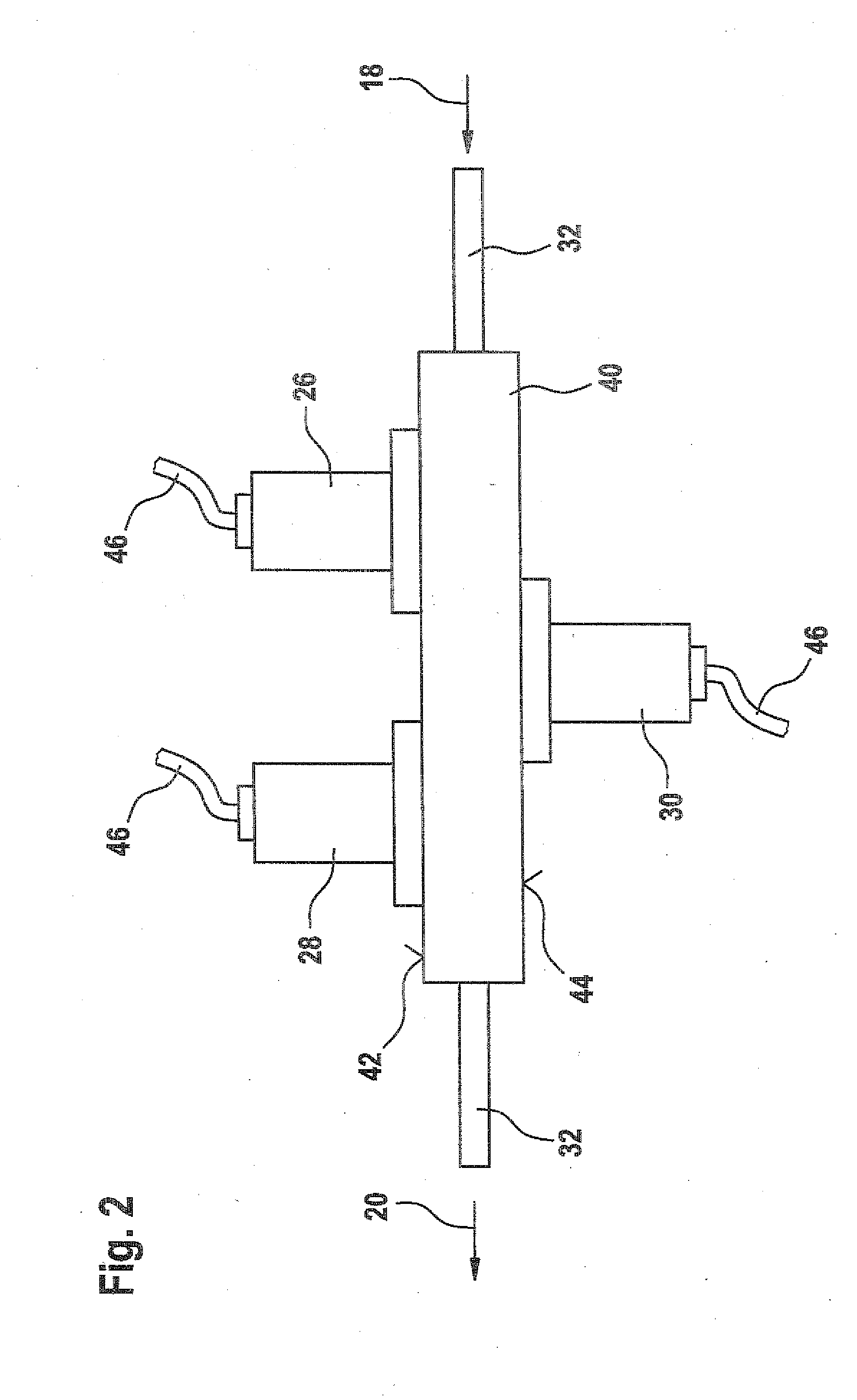Delivery module for selective catalytic reduction
a delivery module and catalytic reduction technology, applied in the direction of machines/engines, combustion types, lighting and heating apparatuses, etc., can solve the problems of adverse effect on cost and space, high cost, and large space requirements of the first sketched version of the common housing, and achieve the effect of high degree of design freedom
- Summary
- Abstract
- Description
- Claims
- Application Information
AI Technical Summary
Benefits of technology
Problems solved by technology
Method used
Image
Examples
Embodiment Construction
[0012]In FIG. 1, a first embodiment of a delivery module according to the prior art can be seen in which the components of a delivery module of a metering system are integrated with a common housing that is sealed off from the outside.
[0013]It can be seen from FIG. 1 that a plurality of components 26, 28, 30 of a delivery module for delivering a reducing agent inside a metering system are disposed inside a central housing 10. In FIG. 1, the first component 26, second component 28, and third component 30 are secured to the bottom of the central housing 10. The central housing 10 is closed by a lid 12, which is sealed off by means of a sealing ring 16 extending all the way around. A central plug with a cable harness 14 is integrated with the lid 12, and by way of it the individual components 26, 28, 30 are electrically contacted inside the central housing 10. An inlet 18 extends into the central housing 10 through its bottom, and the reducing agent leaves the central housing 10 via a ...
PUM
 Login to View More
Login to View More Abstract
Description
Claims
Application Information
 Login to View More
Login to View More - R&D
- Intellectual Property
- Life Sciences
- Materials
- Tech Scout
- Unparalleled Data Quality
- Higher Quality Content
- 60% Fewer Hallucinations
Browse by: Latest US Patents, China's latest patents, Technical Efficacy Thesaurus, Application Domain, Technology Topic, Popular Technical Reports.
© 2025 PatSnap. All rights reserved.Legal|Privacy policy|Modern Slavery Act Transparency Statement|Sitemap|About US| Contact US: help@patsnap.com



